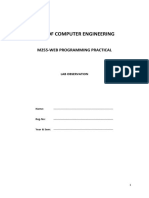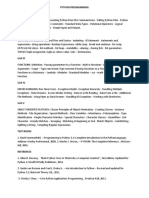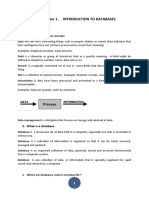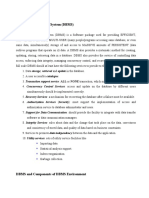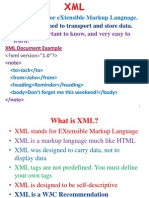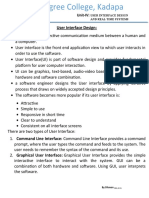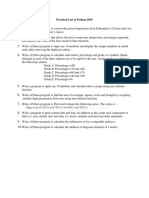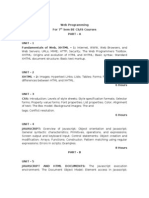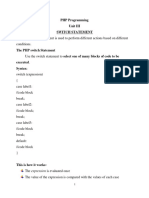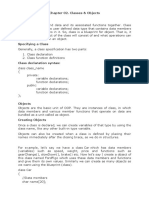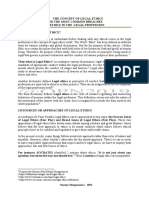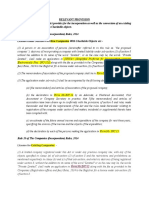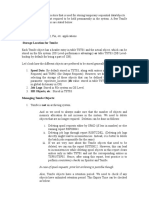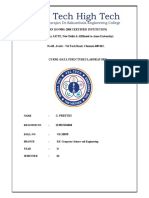7
Chapter 7
Introduction to Structured Query
Language (SQL)
Database Systems:
Design, Implementation, and Management,
Seventh Edition, Rob and Coronel
1
In this chapter, you will learn:
The basic commands and functions of SQL
How to use SQL for data administration (to
create tables etc.)
How to use SQL for data manipulation (to
add, modify, delete, and retrieve data)
How to use SQL to query a database to
extract useful information
Database Systems: Design, Implementation, & Management, 7th Edition, Rob & Coronel
Introduction to SQL
SQL functions fit into two broad categories:
Data definition language
SQL includes commands to:
Create database objects, such as tables etc.
Data manipulation language
Includes commands to insert, update, delete,
and retrieve data within database tables
Database Systems: Design, Implementation, & Management, 7th Edition, Rob & Coronel
Introduction to SQL (continued)
SQL is relatively easy to learn
Basic command set has vocabulary of less
than 100 words
Nonprocedural language
American National Standards Institute (ANSI)
prescribes a standard SQL
Database Systems: Design, Implementation, & Management, 7th Edition, Rob & Coronel
Introduction to SQL (continued)
Database Systems: Design, Implementation, & Management, 7th Edition, Rob & Coronel
Introduction to SQL (continued)
Database Systems: Design, Implementation, & Management, 7th Edition, Rob & Coronel
Introduction to SQL (continued)
Database Systems: Design, Implementation, & Management, 7th Edition, Rob & Coronel
Data Definition Commands
Examine simple database model and
database tables that will form basis for many
SQL examples
Understand data environment
Database Systems: Design, Implementation, & Management, 7th Edition, Rob & Coronel
The Database Model
Database Systems: Design, Implementation, & Management, 7th Edition, Rob & Coronel
The Database Model (continued)
Database Systems: Design, Implementation, & Management, 7th Edition, Rob & Coronel
10
Creating the Database
Following two tasks must be completed:
Create database structure
Create tables that will hold end-user data
Database Systems: Design, Implementation, & Management, 7th Edition, Rob & Coronel
11
Data Types
Data type selection is usually dictated by
nature of data and by intended use
Pay close attention to expected use of
attributes for sorting and data retrieval
purposes
Database Systems: Design, Implementation, & Management, 7th Edition, Rob & Coronel
12
Data Types (continued)
Database Systems: Design, Implementation, & Management, 7th Edition, Rob & Coronel
13
Creating Table Structures (continued)
Primary key attributes contain both a NOT
NULL and a UNIQUE specification
RDBMS will automatically enforce referential
integrity for foreign keys
Command sequence ends with semicolon
Database Systems: Design, Implementation, & Management, 7th Edition, Rob & Coronel
14
SQL Constraints
NOT NULL constraint
Ensures that column does not accept nulls
UNIQUE constraint
Ensures that all values in column are unique
DEFAULT constraint
Assigns value to attribute when a new row is added to
table
CHECK constraint
Validates data when attribute value is entered
Database Systems: Design, Implementation, & Management, 7th Edition, Rob & Coronel
15
Data Manipulation Commands
Adding table rows
Saving table changes
Listing table rows
Updating table rows
Restoring table contents
Deleting table rows
Inserting table rows with a select subquery
Database Systems: Design, Implementation, & Management, 7th Edition, Rob & Coronel
16
Adding Table Rows
INSERT
Used to enter data into table
Syntax:
INSERT INTO columnname
VALUES (value1, value2, , valuen);
Database Systems: Design, Implementation, & Management, 7th Edition, Rob & Coronel
17
Adding Table Rows (continued)
When entering values, notice that:
Row contents are entered between parentheses
Character and date values are entered between
apostrophes
Numerical entries are not enclosed in apostrophes
Attribute entries are separated by commas
A value is required for each column
Use NULL for unknown values
Database Systems: Design, Implementation, & Management, 7th Edition, Rob & Coronel
18
Saving Table Changes
Changes made to table contents are not physically
saved on disk until, one of the following occurs:
Database is closed
Program is closed
COMMIT command is used
Syntax:
COMMIT [WORK];
Will permanently save any changes made to any
table in the database
Database Systems: Design, Implementation, & Management, 7th Edition, Rob & Coronel
19
Listing Table Rows
SELECT
Used to list contents of table
Syntax:
SELECT columnlist
FROM tablename;
Columnlist represents one or more attributes,
separated by commas
Asterisk can be used as wildcard character to list
all attributes
Database Systems: Design, Implementation, & Management, 7th Edition, Rob & Coronel
20
Listing Table Rows (continued)
Database Systems: Design, Implementation, & Management, 7th Edition, Rob & Coronel
21
Updating Table Rows
UPDATE
Modify data in a table
Syntax:
UPDATE tablename
SET columnname = expression [, columname =
expression]
[WHERE conditionlist];
If more than one attribute is to be updated in
row, separate corrections with commas
Database Systems: Design, Implementation, & Management, 7th Edition, Rob & Coronel
22
Restoring Table Contents
ROLLBACK
Used to restore database to its previous condition
Only applicable if COMMIT command has not been
used to permanently store changes in database
Syntax:
ROLLBACK;
COMMIT and ROLLBACK only work with data
manipulation commands that are used to add,
modify, or delete table rows
Database Systems: Design, Implementation, & Management, 7th Edition, Rob & Coronel
23
Deleting Table Rows
DELETE
Deletes a table row
Syntax:
DELETE FROM tablename
[WHERE conditionlist ];
WHERE condition is optional
If WHERE condition is not specified, all rows
from specified table will be deleted
Database Systems: Design, Implementation, & Management, 7th Edition, Rob & Coronel
24
Inserting Table Rows with a
Select Subquery
INSERT
Inserts multiple rows from another table (source)
Uses SELECT subquery
Query that is embedded (or nested) inside
another query
Executed first
Syntax:
INSERT INTO tablename SELECT columnlist
FROM tablename;
Database Systems: Design, Implementation, & Management, 7th Edition, Rob & Coronel
25
Selecting Rows with
Conditional Restrictions
Select partial table contents by placing
restrictions on rows to be included in output
Add conditional restrictions to SELECT
statement, using WHERE clause
Syntax:
SELECT columnlist
FROM tablelist
[ WHERE conditionlist ] ;
Database Systems: Design, Implementation, & Management, 7th Edition, Rob & Coronel
26
Selecting Rows with
Conditional Restrictions (continued)
Database Systems: Design, Implementation, & Management, 7th Edition, Rob & Coronel
27
�Selecting Rows with
Conditional Restrictions (continued)
Database Systems: Design, Implementation, & Management, 7th Edition, Rob & Coronel
28
Selecting Rows with
Conditional Restrictions (continued)
Database Systems: Design, Implementation, & Management, 7th Edition, Rob & Coronel
29
Selecting Rows with
Conditional Restrictions (continued)
Database Systems: Design, Implementation, & Management, 7th Edition, Rob & Coronel
30
Selecting Rows with
Conditional Restrictions (continued)
Database Systems: Design, Implementation, & Management, 7th Edition, Rob & Coronel
31
Selecting Rows with
Conditional Restrictions (continued)
Database Systems: Design, Implementation, & Management, 7th Edition, Rob & Coronel
32
Selecting Rows with
Conditional Restrictions (continued)
Database Systems: Design, Implementation, & Management, 7th Edition, Rob & Coronel
33
Selecting Rows with
Conditional Restrictions (continued)
Database Systems: Design, Implementation, & Management, 7th Edition, Rob & Coronel
34
Selecting Rows with
Conditional Restrictions (continued)
Database Systems: Design, Implementation, & Management, 7th Edition, Rob & Coronel
35
Arithmetic Operators:
The Rule of Precedence
Perform operations within parentheses
Perform power operations
Perform multiplications and divisions
Perform additions and subtractions
Database Systems: Design, Implementation, & Management, 7th Edition, Rob & Coronel
36
Arithmetic Operators:
The Rule of Precedence (continued)
Database Systems: Design, Implementation, & Management, 7th Edition, Rob & Coronel
37
Logical Operators:
AND, OR, and NOT
Database Systems: Design, Implementation, & Management, 7th Edition, Rob & Coronel
38
Logical Operators:
AND, OR, and NOT (continued)
Database Systems: Design, Implementation, & Management, 7th Edition, Rob & Coronel
39
Logical Operators:
AND, OR, and NOT (continued)
Database Systems: Design, Implementation, & Management, 7th Edition, Rob & Coronel
40
Special Operators
BETWEEN
Used to check whether attribute value is within
a range
IS NULL
Used to check whether attribute value is null
LIKE
Used to check whether attribute value
matches given string pattern
Database Systems: Design, Implementation, & Management, 7th Edition, Rob & Coronel
41
Special Operators (continued)
IN
Used to check whether attribute value
matches any value within a value list
EXISTS
Used to check if subquery returns any rows
Database Systems: Design, Implementation, & Management, 7th Edition, Rob & Coronel
42
Advanced Data Definition Commands
All changes in table structure are made by
using ALTER command
Followed by keyword that produces specific
change
Following three options are available:
ADD
MODIFY
DROP
Database Systems: Design, Implementation, & Management, 7th Edition, Rob & Coronel
43
Adding a Column
Use ALTER to add column
Do not include the NOT NULL clause for new
column
Database Systems: Design, Implementation, & Management, 7th Edition, Rob & Coronel
44
Dropping a Column
Use ALTER to drop column
Some RDBMSs impose restrictions on the
deletion of an attribute
Database Systems: Design, Implementation, & Management, 7th Edition, Rob & Coronel
45
Advanced Data Updates
Database Systems: Design, Implementation, & Management, 7th Edition, Rob & Coronel
46
Copying Parts of Tables
SQL permits copying contents of selected
table columns so that the data need not be
reentered manually into newly created
table(s)
First create the PART table structure
Next add rows to new PART table using
PRODUCT table rows
Database Systems: Design, Implementation, & Management, 7th Edition, Rob & Coronel
47
Copying Parts of Tables (continued)
Database Systems: Design, Implementation, & Management, 7th Edition, Rob & Coronel
48
Adding Primary and Foreign Key
Designations
When table is copied, integrity rules do not
copy, so primary and foreign keys need to be
manually defined on new table
User ALTER TABLE command
Syntax:
ALTER TABLE tablename ADD
PRIMARY KEY(fieldname);
For foreign key, use FOREIGN KEY in place of
PRIMARY KEY
Database Systems: Design, Implementation, & Management, 7th Edition, Rob & Coronel
49
Deleting a Table from the Database
DROP
Deletes table from database
Syntax:
DROP TABLE tablename;
Database Systems: Design, Implementation, & Management, 7th Edition, Rob & Coronel
50
Advanced Select Queries
SQL provides useful functions that can:
Count
Find minimum and maximum values
Calculate averages
SQL allows user to limit queries to only those
entries having no duplicates or entries whose
duplicates may be grouped
Database Systems: Design, Implementation, & Management, 7th Edition, Rob & Coronel
51
Ordering a Listing
Database Systems: Design, Implementation, & Management, 7th Edition, Rob & Coronel
52
Ordering a Listing (continued)
Database Systems: Design, Implementation, & Management, 7th Edition, Rob & Coronel
53
Ordering a Listing (continued)
Database Systems: Design, Implementation, & Management, 7th Edition, Rob & Coronel
54
Listing Unique Values
Database Systems: Design, Implementation, & Management, 7th Edition, Rob & Coronel
55
Aggregate Functions
Database Systems: Design, Implementation, & Management, 7th Edition, Rob & Coronel
56
Aggregate Functions (continued)
Database Systems: Design, Implementation, & Management, 7th Edition, Rob & Coronel
57
Aggregate Functions (continued)
Database Systems: Design, Implementation, & Management, 7th Edition, Rob & Coronel
58
Aggregate Functions (continued)
Database Systems: Design, Implementation, & Management, 7th Edition, Rob & Coronel
59
Aggregate Functions (continued)
Database Systems: Design, Implementation, & Management, 7th Edition, Rob & Coronel
60
Grouping Data
Database Systems: Design, Implementation, & Management, 7th Edition, Rob & Coronel
61
Grouping Data (continued)
Database Systems: Design, Implementation, & Management, 7th Edition, Rob & Coronel
62
Grouping Data (continued)
Database Systems: Design, Implementation, & Management, 7th Edition, Rob & Coronel
63
Virtual Tables: Creating a View
View is virtual table based on SELECT query
Can contain columns, computed columns,
aliases, and aggregate functions from one or
more tables
Base tables are tables on which view is
based
Create view by using CREATE VIEW
command
Database Systems: Design, Implementation, & Management, 7th Edition, Rob & Coronel
64
Virtual Tables: Creating a View
(continued)
Database Systems: Design, Implementation, & Management, 7th Edition, Rob & Coronel
65
Joining Database Tables
Ability to combine (join) tables on common
attributes is most important distinction
between relational database and other
databases
Join is performed when data are retrieved
from more than one table at a time
Join is generally composed of an equality
comparison between foreign key and primary
key of related tables
Database Systems: Design, Implementation, & Management, 7th Edition, Rob & Coronel
66
Joining Database Tables (continued)
Database Systems: Design, Implementation, & Management, 7th Edition, Rob & Coronel
67
Joining Database Tables (continued)
Database Systems: Design, Implementation, & Management, 7th Edition, Rob & Coronel
68
Joining Database Tables (continued)
Database Systems: Design, Implementation, & Management, 7th Edition, Rob & Coronel
69
Joining Tables with an Alias
Alias can be used to identify source table
Any legal table name can be used as alias
Add alias after table name in FROM clause
FROM tablename alias
Database Systems: Design, Implementation, & Management, 7th Edition, Rob & Coronel
70
Recursive Joins
Database Systems: Design, Implementation, & Management, 7th Edition, Rob & Coronel
71
Recursive Joins (continued)
Database Systems: Design, Implementation, & Management, 7th Edition, Rob & Coronel
72
Outer Joins
Database Systems: Design, Implementation, & Management, 7th Edition, Rob & Coronel
73
Outer Joins (continued)
Database Systems: Design, Implementation, & Management, 7th Edition, Rob & Coronel
74
Summary
SQL commands can be divided into two
overall categories:
Data definition language commands
Data manipulation language commands
The ANSI standard data types are supported
by all RDBMS vendors in different ways
Basic data definition commands allow you to
create tables, indexes, and views
Database Systems: Design, Implementation, & Management, 7th Edition, Rob & Coronel
75
Summary (continued)
DML commands allow you to add, modify, and delete
rows from tables
The basic DML commands are SELECT, INSERT,
UPDATE, DELETE, COMMIT, and ROLLBACK
INSERT command is used to add new rows to tables
SELECT statement is main data retrieval command
in SQL
Database Systems: Design, Implementation, & Management, 7th Edition, Rob & Coronel
76
Summary (continued)
Many SQL constraints can be used with
columns
The column list represents one or more
column names separated by commas
WHERE clause can be used with SELECT,
UPDATE, and DELETE statements to restrict
rows affected by the DDL command
Database Systems: Design, Implementation, & Management, 7th Edition, Rob & Coronel
77
Summary (continued)
Aggregate functions
Special functions that perform arithmetic
computations over a set of rows
ORDER BY clause
Used to sort output of SELECT statement
Can sort by one or more columns and use
either an ascending or descending order
Join output of multiple tables with SELECT
statement
Database Systems: Design, Implementation, & Management, 7th Edition, Rob & Coronel
78
Summary (continued)
Natural join uses join condition to match only
rows with equal values in specified columns
Right outer join and left outer join used to
select rows that have no matching values in
other related table
Database Systems: Design, Implementation, & Management, 7th Edition, Rob & Coronel
79










